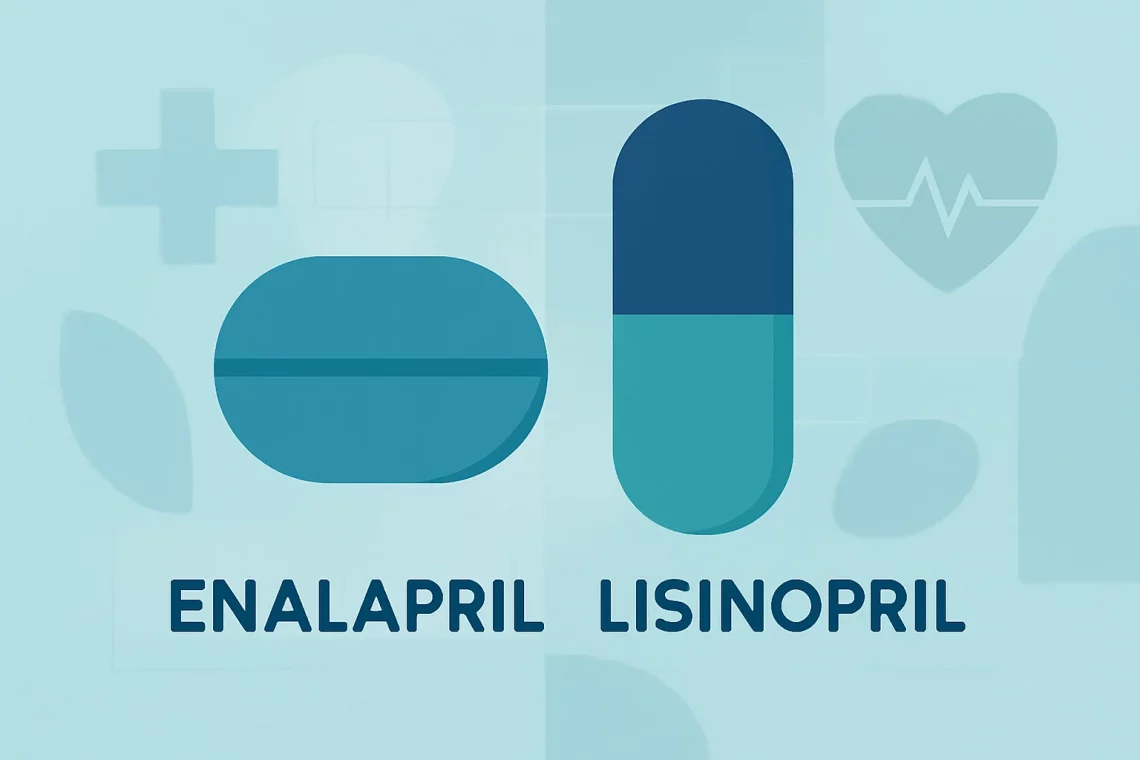
Enalapril vs Lisinopril: Which Medication is Right for You?
Enalapril and lisinopril are two widely used medications in the treatment of hypertension and heart failure. Both belong to the class of medications known as ACE inhibitors, which play a crucial role in managing blood pressure by relaxing blood vessels. This leads to improved blood flow and reduced workload on the heart. Despite their similarities, enalapril and lisinopril possess distinct characteristics that may influence a healthcare provider’s choice of one over the other for a particular patient. The decision often hinges on various factors, including the patient’s overall health profile, other underlying conditions, and potential interactions with other medications.
The way these drugs are metabolized and eliminated from the body can also differ, affecting their efficacy and side effects. Understanding these differences is essential for patients and healthcare professionals alike. As hypertension continues to be a prevalent condition worldwide, the effectiveness of these medications remains a vital topic of discussion. This article will delve deeper into the properties, uses, and considerations surrounding enalapril and lisinopril, offering insights that can aid in understanding these two important medications.
Understanding Enalapril
Enalapril is an ACE inhibitor that has been used for several decades in the management of high blood pressure and heart failure. The medication works by inhibiting the enzyme responsible for converting angiotensin I to angiotensin II, a peptide that causes blood vessels to constrict. By blocking this conversion, enalapril promotes vasodilation, leading to lower blood pressure and reduced strain on the heart.
One of the primary benefits of enalapril is its ability to improve heart function in patients with heart failure. By reducing the workload on the heart, it helps to alleviate symptoms such as shortness of breath and fatigue, significantly improving the quality of life for many patients. Additionally, enalapril is often prescribed to protect the kidneys in patients with diabetes, as it can slow the progression of diabetic nephropathy.
Enalapril is typically taken orally and is available in various dosages. Healthcare providers usually start patients on a lower dose to monitor for side effects and adjust as necessary. Common side effects may include dizziness, headache, and gastrointestinal disturbances. More serious side effects, although less common, can include elevated potassium levels and angioedema, a potentially life-threatening allergic reaction.
Patients taking enalapril should be regularly monitored for blood pressure and kidney function, especially in the initial stages of treatment. Moreover, it is crucial to inform healthcare providers of any other medications being taken, as interactions can occur that may affect the efficacy of enalapril or lead to increased side effects.
In summary, enalapril is a well-established medication that offers significant benefits in the management of hypertension and heart failure. Its role in protecting kidney function further underscores its importance in treating patients with comorbid conditions, making it a versatile option in the pharmacologic arsenal against cardiovascular diseases.
Exploring Lisinopril
Lisinopril is another widely prescribed ACE inhibitor, known for its effectiveness in treating high blood pressure and heart failure. Like enalapril, lisinopril works by inhibiting the enzyme that converts angiotensin I to angiotensin II. This mechanism of action leads to vasodilation and a subsequent decrease in blood pressure, thereby alleviating the burden on the cardiovascular system.
One of the standout features of lisinopril is its long half-life, which allows for once-daily dosing in most cases. This can enhance medication adherence, as patients are less likely to forget to take multiple doses throughout the day. Lisinopril is also beneficial for patients with heart failure, as it can help improve symptoms and reduce hospitalizations related to heart failure exacerbations.
In terms of side effects, lisinopril shares similarities with enalapril. Common side effects include dizziness, cough, and potential elevations in potassium levels. The dry cough associated with lisinopril can be bothersome for some patients, leading them to seek alternative treatments. It is essential to discuss any persistent side effects with a healthcare provider, who may consider switching to a different medication if necessary.
Lisinopril is also used in the post-myocardial infarction setting to improve survival rates. Its role in preventing further cardiovascular events makes it a critical component of post-heart attack management strategies.
Before starting lisinopril, healthcare providers typically assess kidney function and blood pressure levels. Regular monitoring is crucial to ensure the medication’s effectiveness and to minimize the risk of adverse effects. Patients should also disclose any other health conditions or medications they are taking to their healthcare provider to avoid potential drug interactions.
In conclusion, lisinopril is an effective and widely utilized medication for managing hypertension and heart failure. Its ease of use, along with its proven efficacy in improving cardiovascular outcomes, solidifies its position as a staple in hypertension management.
Comparative Analysis: Enalapril vs. Lisinopril
When comparing enalapril and lisinopril, it’s essential to consider several factors that may influence treatment decisions. While both medications function as ACE inhibitors and share similar therapeutic effects, differences in their pharmacokinetics, dosing frequency, and side effect profiles can impact the choice of medication for individual patients.
One of the primary differences between the two is their pharmacokinetic properties. Lisinopril is generally faster acting and has a longer half-life than enalapril, allowing for once-daily dosing. This can be particularly advantageous for patients who prefer a simpler medication regimen. Conversely, enalapril may require more frequent dosing in some cases to achieve optimal blood pressure control.
Side effects are another critical consideration. While both medications can cause similar adverse effects, the incidence of a persistent cough is more commonly associated with lisinopril. If a patient experiences a bothersome cough while taking lisinopril, a healthcare provider may recommend switching to enalapril or another class of antihypertensive medication.
Cost and availability may also play a role in treatment selection. While both medications are generally affordable, regional differences in pricing and insurance coverage can influence patient access. Healthcare providers often consider these economic factors when prescribing medications, aiming to find the most effective and accessible option for their patients.
Moreover, patient-specific factors such as renal function, age, and comorbid conditions should be considered. For example, patients with significant kidney impairment may require careful monitoring and dose adjustments for both enalapril and lisinopril. Additionally, the clinician’s experience and familiarity with each medication can impact the choice, as some providers may have a preference based on clinical outcomes observed in their practice.
Ultimately, the decision to prescribe enalapril or lisinopril should be made collaboratively between the patient and their healthcare provider, taking into account individual health needs, preferences, and potential side effects.
Final Considerations and Patient Education
Patient education is vital when initiating treatment with either enalapril or lisinopril. Understanding the purpose of the medication, how it works, and the importance of adherence can empower patients to take an active role in managing their health. It is essential to inform patients about potential side effects and the importance of reporting any unusual symptoms to their healthcare provider.
Regular follow-up appointments are crucial for monitoring blood pressure, kidney function, and any side effects that may arise during treatment. Patients should be encouraged to maintain a healthy lifestyle, including a balanced diet, regular exercise, and smoking cessation, as these factors can significantly influence the effectiveness of hypertension treatment.
Additionally, healthcare providers should discuss the potential for drug interactions with other medications or supplements the patient may be taking. This will help to minimize risks and optimize the therapeutic effects of enalapril or lisinopril.
In conclusion, both enalapril and lisinopril are valuable tools in the management of hypertension and heart failure. Understanding their similarities and differences can aid in making informed treatment decisions that are tailored to individual patient needs.
**Disclaimer:** This article is not intended as medical advice. Individuals should always consult their healthcare provider for questions regarding their health and any medications they are taking.




